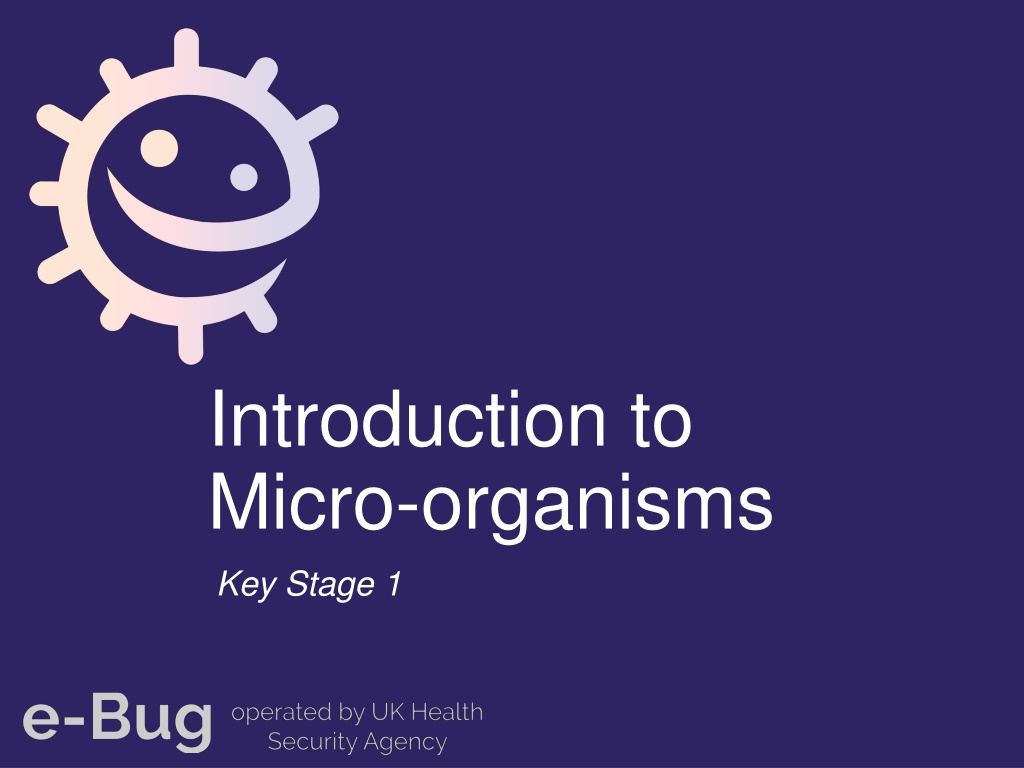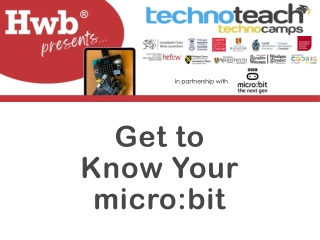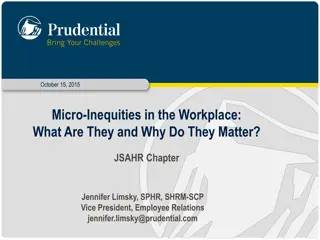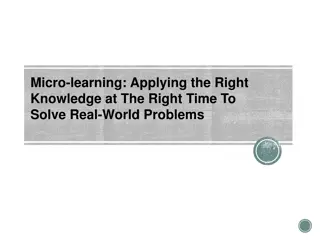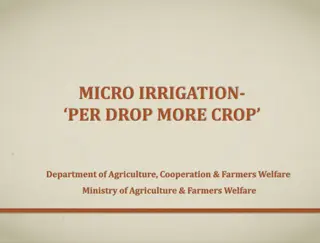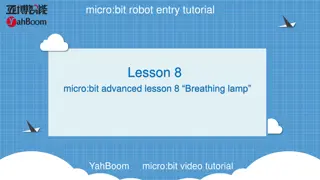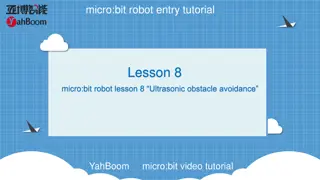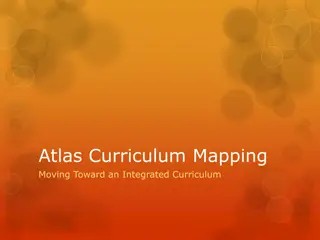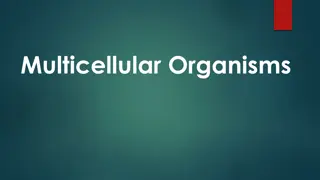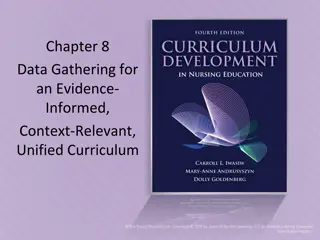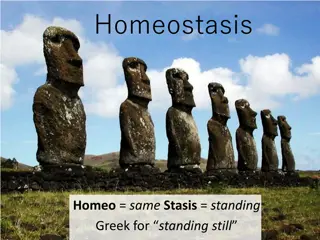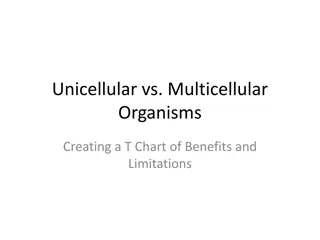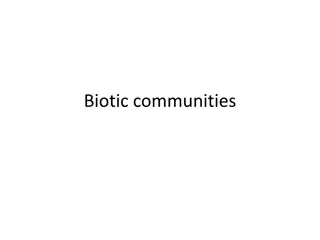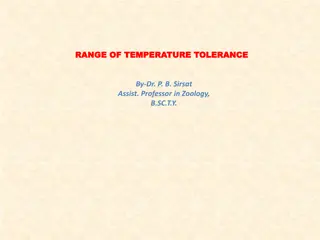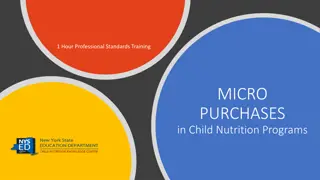Exploring Micro-organisms in Key Stage 1 Curriculum
Discovering the world of micro-organisms is essential in Key Stage 1 education. Students learn about the different types of microbes, their shapes and sizes, and how they can be both harmful and beneficial. Through interactive activities like modelling microbes, students explore the role of viruses, bacteria, and fungi in our daily lives. With a focus on health, prevention, and scientific exploration, this curriculum enriches students' understanding of living things and their habitats.
Download Presentation

Please find below an Image/Link to download the presentation.
The content on the website is provided AS IS for your information and personal use only. It may not be sold, licensed, or shared on other websites without obtaining consent from the author. Download presentation by click this link. If you encounter any issues during the download, it is possible that the publisher has removed the file from their server.
E N D
Presentation Transcript
Introduction to Micro-organisms Key Stage 1
Learning Outcomes All students will: Understand there are three different types of microbes: viruses, bacteria and fungi. Understand microbes are all different shapes and sizes. Understand some microbes are useful but some can be harmful. Most students will: Understand microbes are found everywhere. Understand most microbes are too small to be seen with the naked eye. e-Bug.eu
Curriculum Links PHSE/RHSE Health and prevention Science Working scientifically Living things and their habitats English Reading & comprehension Writing e-Bug.eu
What are Microbes? Microbes are tiny living things that are all around us; most of these are too small to be seen with our naked eyes. Some illnesses called infections, are caused by these tiny living things called microbes and there are three different types of microbes: viruses, bacteria and fungi. Some microbes make us ill, there are also useful microbes, for example, bacteria help to make foods like yoghurt, and fungi like yeast help make bread, while other fungi are used as medicines. Microbes can be found EVERYWHERE: floating around in the air we breathe, on the food we eat, on the surface of our bodies, in our mouth, nose and gut/tummy, most of these are not harmful and some are good for us. e-Bug.eu
Main Activity: Modelling Microbes e-Bug.eu
4. Take your Petri dish home 3. Write the name of your microbe on your Petri dish 1. Shape your microbe using modelling clay 2. Place onto a Petri dish =
Discussion e-Bug.eu
Discussion Points What have you made? Are all microbes harmful? What are three different types of microbes? What are the difference between viruses, bacteria and fungi? e-Bug.eu
Extension Activities e-Bug.eu
Microbe Mania Fact Sheet What is a microbe? Microbes are also called germs or bugs. There are three types of microbes: bacteria, viruses and fungi. Some microbes can make us ill, but most are very useful to us. Where are microbes found and what do they look like? Microbes are found everywhere. They come in all shapes and sizes. e-Bug.eu
Microbe Fascinating Facts Microbes are the oldest form of life on Earth. They ve been here for four billion years! There are more microbes on the planet than any other type of living thing. Microbes are found everywhere on Earth, even inside volcanoes. Humans would not be able to live without microbes. Some microbes produce oxygen which we need to breathe, and others help plants to grow which we eat. Some microbes can glow in the dark. People once used glowing pieces of fungi growing on wood to light the way. Micro-organisms first appeared on earth about 3.5 billion years ago and are essential to sustain life on our planet. e-Bug.eu
Microbe Example - Influenza Influenza virus In-floo-en-za About Also known as the flu virus It is a virus that is harmful to humans Symptoms and treatment Causes fever (high temperature), runny nose, sore throat, muscle pains, cough, feeling tired Spreads from person to person by coughs and sneezes and unwashed hands Treatment is rest and plenty of fluids to feel better. If very unwell, an antiviral medicine may help.
Microbe Example - Rhinovirus Rhinovirus Rye-no-vye-rus About Also known as the common cold It is a virus that is harmful to humans Symptoms and treatment Causes runny nose, sneezing, sore throat, and coughing Spreads from person to person by coughs and sneezes and unwashed hands Treatment is rest and plenty of fluids to feel better.
Microbe Example - Filovirus Filovirus File-o-vi-rus About Filovirus is harmful to humans and causes a disease called Ebola. It has been in the news as people living in Africa have caught the virus and many have died. The virus lives naturally in wild animals in Africa and is not found in other continents. Symptoms and treatment Ebola virus makes people very unwell and in worst cases, death. People with Ebola will need special treatment and hospital care to help get better.
Yes or No? (1/2) Microbe is another name for bugs and germs YES Most microbes can be seen with the naked eye NO Microbes always make us poorly Most colds are caused by viruses NO YES e-Bug.eu
Yes or No? (2/2) If you become poorly because of a microbe, this is called an infection YES Bacteria are used to make yoghurt YES You only find microbes on things that are dirty, like the toilet NO Most microbes do not affect us in any way YES e-Bug.eu
Microbes Flashcards e-Bug.eu
Microbes Flashcards - Answers Balls (Cocci) Fungi Virus Bacteria Rod Penicillium Lactobacilli Spiral e-Bug.eu
Microbes Worksheet What have you learnt about microbes? Complete the sentences below Microbe Mania Fill in the Blank Germs and bugs are also called _ _ _ _ _ _ _ _ and there are three main types. The smallest microbe is a _ _ _ _ _ and they can make us poorly with a cough or a cold. The largest microbe is a _ _ _ _ _ _. We use this to make bread. Balls, rods and spirals are the three main shapes of _ _ _ _ _ _ _ _. Microbes are found _ _ _ _ _ _ _ _ _ _ and even in volcanoes! e-Bug.eu
Microbe Mania Fill in the Blank - Answers Microbes Worksheet What have you learnt about microbes? Complete the sentences below Germs and bugs are also called _ _ _ _ _ _ _ _ _ _ and there are three main types. microbes The smallest microbe is a _ _ _ _ _ _ _ _ _ _ and they can make us poorly with a cough or a cold. virus fungi The largest microbe is a _ _ _ _ _ _ _ _ _ _. We use this to make bread. Balls, rods and spirals are the three main shapes of _ _ _ _ _ _ _ _ _ _. bacteria everywhere Microbes are found _ _ _ _ _ _ _ _ _ _ and even in volcanoes! e-Bug.eu
Learning Consolidation e-Bug.eu
What are the three different types of microbes? Viruses Fungi Bacteria e-Bug.eu
Microbes can be beneficial to us e.g. yeast, can be used to make bread rise. What type of microbe is yeast? Fungus e-Bug.eu
Microbes are invisible to the naked eye and come in different shapes and sizes. True or False? True Microbes are tiny living things that are all around us; most of these are too small to be seen with our naked eyes. e-Bug.eu
